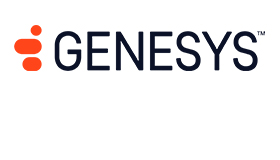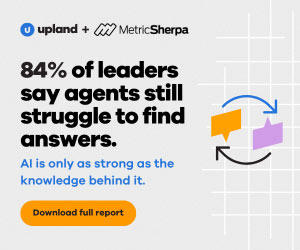Cameron Smith of Genesys discusses how artificial intelligence (AI) automates and simplifies contact centre workforce planning.
Thoughts of artificial intelligence (AI), especially dueling algorithms, might immediately conjure up images from movies like “The Terminator” or “The Matrix” — where these technologies work to enslave humanity. Yet, even now, they’re used in very much the opposite way: finding opportunities to free us from constraints and give us more flexibility over when — and how — we work.
Over the next few years, companies using AI-based forecasting and scheduling tools might build more goodwill with their employees as they allow them to work around other obligations, choosing the shifts they want to work and take off.
Also, as more employees work from home and often wear many hats at work, streamlining employee scheduling isn’t a luxury — it’s a requirement to retain workers and keep them motivated.
However, a contact centre manager or workforce planner has to balance this requirement with many other competing tasks. Contact centres are staffed to ensure there are enough agents to handle the volume of inbound and outbound interactions. Managers should investigate how staffing and interaction forecasts will affect handle times, first-call resolution, Net Promoter Score (NPS) and other metrics that they measure against.
Also, they have to take into account employee vacations or scheduled time off, as well as holidays and sick leaves, to be sure they’re adhering to labour laws when creating work schedules. This all can be overwhelming.
Manual Planning and Spreadsheet Failure
To figure out when employees should work, a planner has to gather data about previous interactions. Looking ahead, they’ll need to adjust for expected volumes around holidays or planned sales. Then they can build their forecast for interactions with mathematical models. Once that’s done, they need to review and verify the models to make sure they’ll actually work. Next, the planner applies a staffing forecast and builds a schedule for individual employees or queues. Finally, manual adjustments are made to account for individual employee preferences.
Many planners still rely on spreadsheets for planning — not because that’s the best method, but because they provide the flexibility needed to consider employee preferences and different requests. Planners must be flexible and make manual changes. However, as contact centres grow and complexities increase, these manual systems can fall apart.
The forecasting part of the process tends to be the easier because the planner hands off the task to a mathematical model. New systems run dozens of different algorithms concurrently, including AI-based models that improve accuracy. The competition is run against segments of historical data until the winning method is selected.
However, these systems don’t stop there. The competition is run again every time a forecast is created, in case different methods are a better match because of external factors that affect predictions.
Setting Up AI-Based Forecasting
Much of the hard work involved with setting up AI-based forecasting requires collecting and preparing the data for consumption by a forecasting machine. Fortunately, systems that automate the collection of time-series data, ensuring that it’s properly labelled and formatted, can reduce much of that effort.
The next step is for these systems to remove outliers that can affect the forecast — identifying anomalies versus ones that must be considered, such as seasonal effects.
Once these two steps are complete, you can use pattern recognition to look for positive and negative trends and seasonality. Then apply a bake-off of AI tools and different forecasting methods to find a winning method.
Once you have a reliable forecast, you can confidently apply different schedules against it and simulate how employees’ time-off preferences will affect metrics like average handle time and NPS. Also, you can implement system-based policies to automatically grant time-off requests or allow for shift trading — without needing a manager to intervene.

Cameron Smith
Beyond the benefits of better, more predictable performance against KPIs, contact centres that implement AI-based forecasting systems will change the relationships between employees and managers — for the better.
For example, managers can focus less on reviewing whether an employee can take time off to help a family member and focus more on coaching and improving service offerings. This improves work satisfaction and creates happier employees who, in turn, pass this empathy on to your customers.
This blog post has been re-published by kind permission of Genesys – View the Original Article
For more information about Genesys - visit the Genesys Website
Call Centre Helper is not responsible for the content of these guest blog posts. The opinions expressed in this article are those of the author, and do not necessarily reflect those of Call Centre Helper.
Author: Genesys
Published On: 11th Jan 2021 - Last modified: 13th Jan 2025
Read more about - Guest Blogs, Cameron Smith, Genesys






 Genesys empowers more than 8,000 organisations in over 100 countries to improve loyalty and business outcomes by creating the best experiences for their customers and employees. Through Genesys Cloud, the AI-Powered Experience Orchestration platform, Genesys delivers the future of CX to organisations of all sizes so they can provide empathetic, personalised experience at scale. As the trusted platform that is born in the cloud, Genesys Cloud helps organisations accelerate growth by enabling them to differentiate with the right customer experience at the right time, while driving stronger workforce engagement, efficiency and operational improvements.
Genesys empowers more than 8,000 organisations in over 100 countries to improve loyalty and business outcomes by creating the best experiences for their customers and employees. Through Genesys Cloud, the AI-Powered Experience Orchestration platform, Genesys delivers the future of CX to organisations of all sizes so they can provide empathetic, personalised experience at scale. As the trusted platform that is born in the cloud, Genesys Cloud helps organisations accelerate growth by enabling them to differentiate with the right customer experience at the right time, while driving stronger workforce engagement, efficiency and operational improvements. 


































